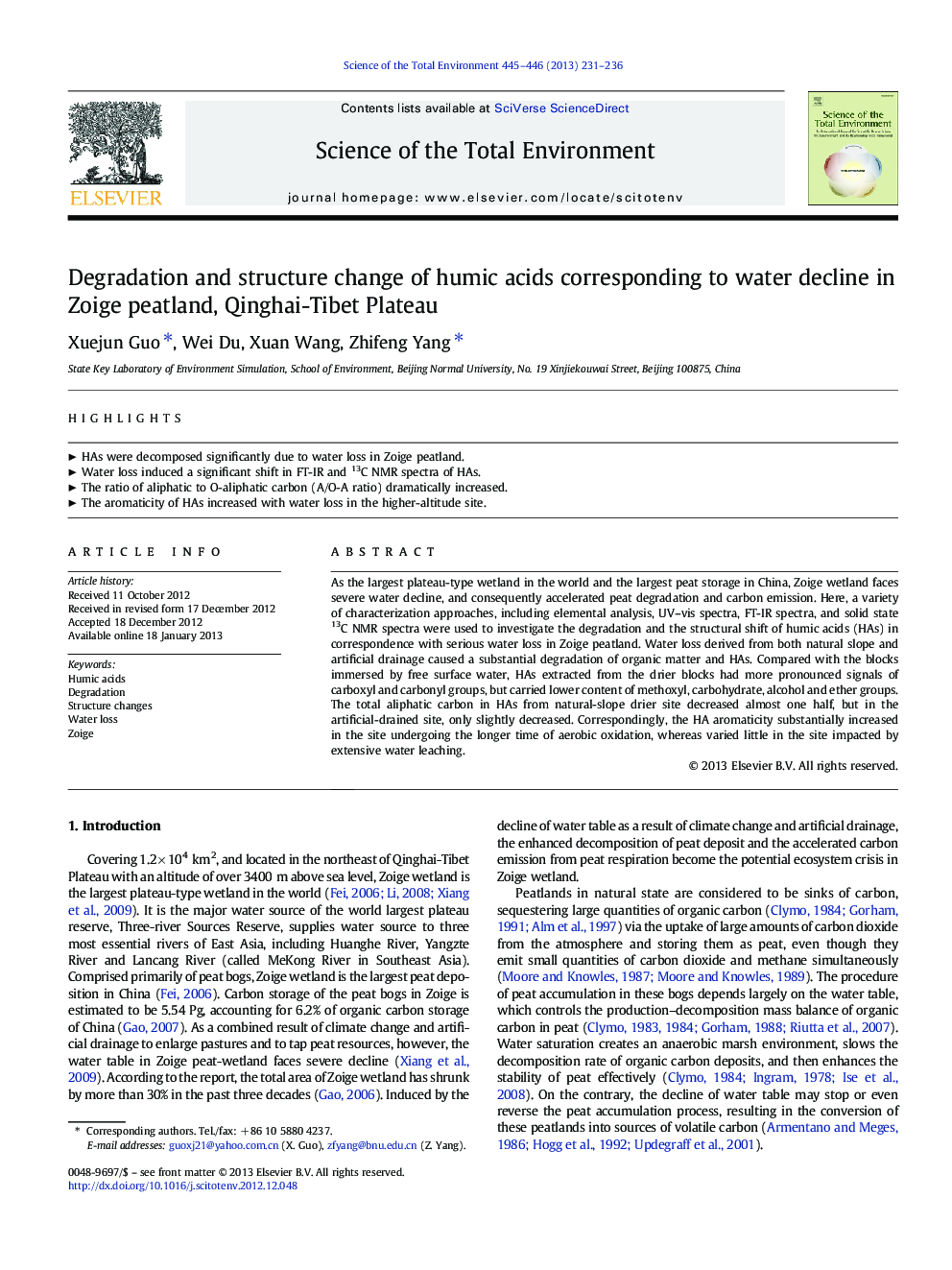| Article ID | Journal | Published Year | Pages | File Type |
|---|---|---|---|---|
| 4428946 | Science of The Total Environment | 2013 | 6 Pages |
As the largest plateau-type wetland in the world and the largest peat storage in China, Zoige wetland faces severe water decline, and consequently accelerated peat degradation and carbon emission. Here, a variety of characterization approaches, including elemental analysis, UV–vis spectra, FT-IR spectra, and solid state 13C NMR spectra were used to investigate the degradation and the structural shift of humic acids (HAs) in correspondence with serious water loss in Zoige peatland. Water loss derived from both natural slope and artificial drainage caused a substantial degradation of organic matter and HAs. Compared with the blocks immersed by free surface water, HAs extracted from the drier blocks had more pronounced signals of carboxyl and carbonyl groups, but carried lower content of methoxyl, carbohydrate, alcohol and ether groups. The total aliphatic carbon in HAs from natural-slope drier site decreased almost one half, but in the artificial-drained site, only slightly decreased. Correspondingly, the HA aromaticity substantially increased in the site undergoing the longer time of aerobic oxidation, whereas varied little in the site impacted by extensive water leaching.
► HAs were decomposed significantly due to water loss in Zoige peatland. ► Water loss induced a significant shift in FT-IR and 13C NMR spectra of HAs. ► The ratio of aliphatic to O-aliphatic carbon (A/O-A ratio) dramatically increased. ► The aromaticity of HAs increased with water loss in the higher-altitude site.
